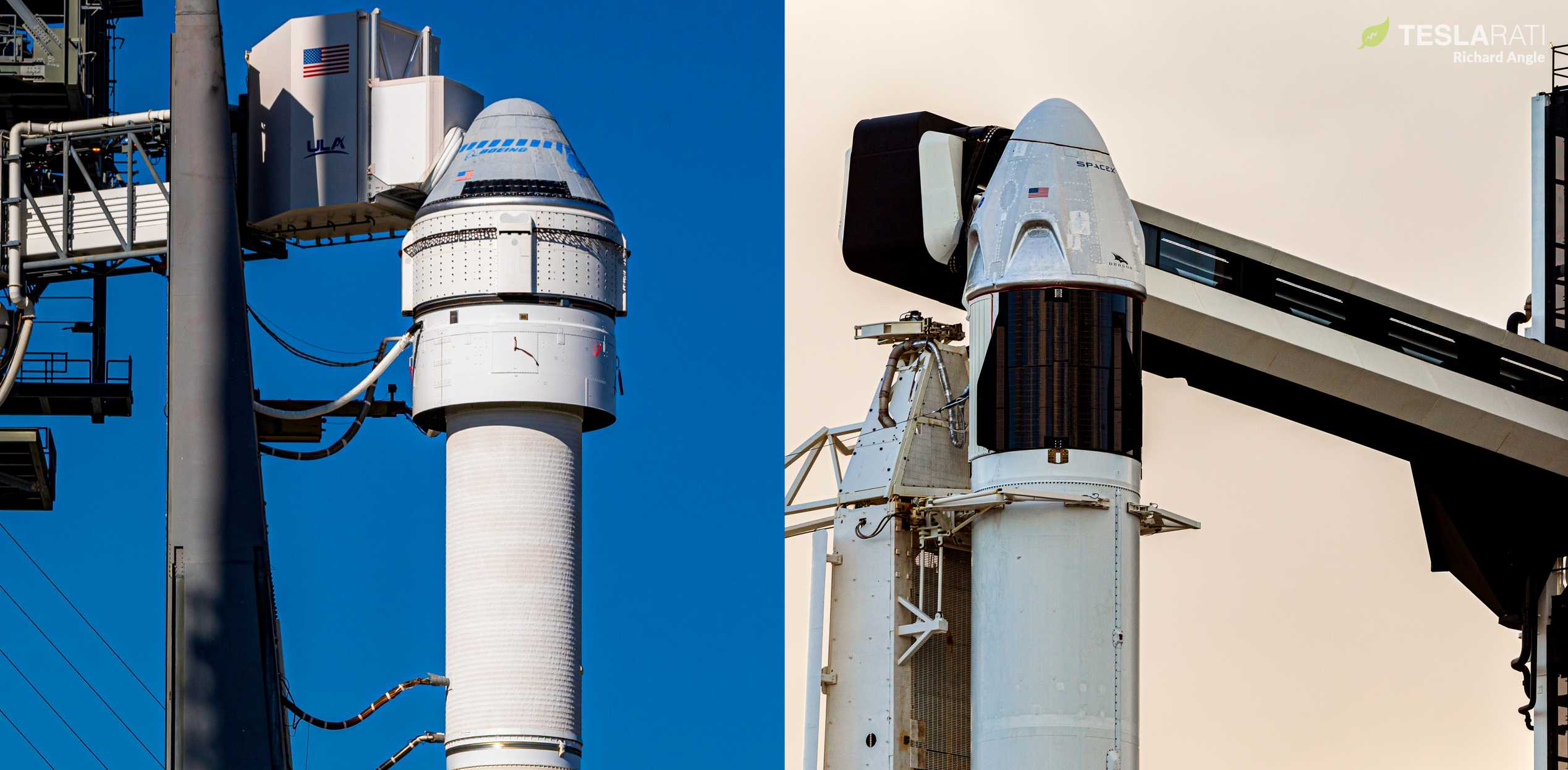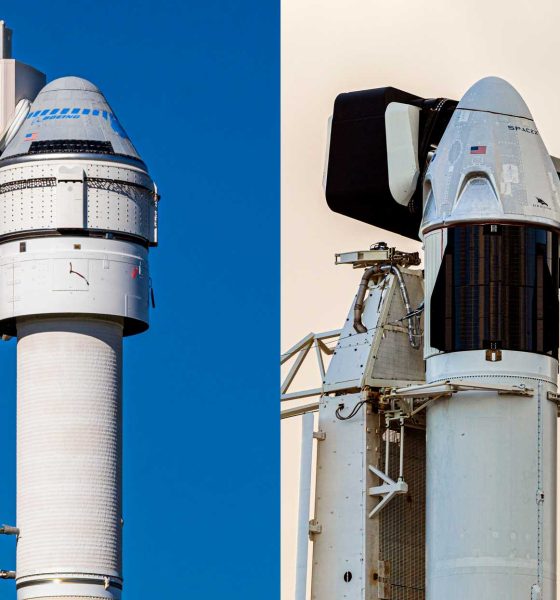

News
Report: SpaceX to launch at least five back-to-back Crew Dragon missions for NASA
Update: Wasting no time at all, NASA has confirmed the Ars Technica report one day later, announcing that rookie astronauts Nicole Mann and Josh Cassada have been reassigned from Boeing Starliner missions to SpaceX’s Crew-5 Crew Dragon launch – currently no earlier than August 2022.
Ars Technica’s Eric Berger reports that NASA has begun the process of moving a number of astronauts assigned to Boeing’s ailing Starliner spacecraft to a SpaceX Crew Dragon mission scheduled no earlier than August 2022.
Per sources close to Berger, NASA has chosen to reassign two rookie astronauts to Crew Dragon as hopes of a crewed Starliner launch – and thus an opportunity for them to gain hands-on spaceflight experience – in the next 6-12 months continue to wither. Barring surprises, the implied change of plans behind those actions means that SpaceX now appears to be scheduled to fly five operational NASA Crew Dragon missions back to back before Boeing’s Starliner flies a single astronaut – let alone its first operational mission with four crew aboard.
In December 2019, nine months after Crew Dragon’s own uncrewed March 2019 debut, Starliner lifted off for the first time on a ULA Atlas V rocket. However, whereas Crew Dragon performed a practically flawless orbital launch, space station rendezvous, docking, departure, reentry, and splashdown on its first try, Starliner’s Orbital Flight Test (OFT) went horribly wrong as soon as it separated from Atlas V.
Due to shoddy prelaunch testing that failed to detect several gaping holes in Starliner’s software, the spacecraft effectively lost control as soon as it was under its own power. Aside from making ground communication and control far harder, Starliner burned through most of its propellant and pushed most of its maneuvering thrusters past their design limits in the first hour or two after launch. Due to the catastrophic software failure and lack of propellant margins, NASA unsurprisingly called off a planned space station rendezvous and docking attempt and Boeing ultimately ordered Starliner to reenter a few days after launch.
Mere hours before reentry, Boeing apparently detected and fixed another major software error at the last second, potentially preventing Starliner’s propulsion and service module from smashing into the capsule’s fragile heat shield and dooming the spacecraft to burn up during reentry. Ultimately, it’s likely that the only reason Boeing didn’t suffer a total loss of vehicle (LOV) during Starliner’s OFT debut spacecraft was dumb luck. Had the initial clock error been worse, Starliner could have failed to reach orbit entirely or burned through all of its propellant, resulting in an uncontrolled reentry. Had there been no clock issue, it’s hard to imagine that Boeing’s software team would have attempted the panicked, impromptu bug hunt that detected and fixed the service module recontact issue.
Now, 22 months after Starliner’s catastrophic OFT, Boeing has been forced to stand down from a second self-funded orbital flight test (OFT-2) due to the last-second discovery of more than a dozen malfunctioning valves on the second spacecraft’s service module. Aside from raising the question of how Boeing and NASA yet again failed to detect a glaring Starliner issue until the day of launch, Starliner’s valve issues appear likely to cause another multi-month delay as Boeing is forced to investigate the problem, find the root cause, and implement a fix on all impacted service modules.
NASA reassigning some of the astronauts scheduled to helm Starliner on its Crewed Flight Test (CFT) and first operational mission to Crew Dragon’s August 2022 Crew-5 launch seemingly implies that the space agency is not confident that Boeing will have completed Starliner OFT-2, passed extensive post-flight reviews, and readied another Starliner for CFT by Q3 2022. Given that NASA took some 14 months to OK Crew Dragon’s Demo-2 crewed flight test after Demo-1’s March 2019 success and a catastrophic April 2019 failure during a ground test of the recovered capsule, it’s not unreasonable to assume that NASA will take about a year after OFT-2 to approve Starliner’s first crewed flight test.
If significant issues arise during OFT-2, which is now unlikely to occur before early 2022, a year-long gap is even more likely. Ultimately, that means that there is now a significant chance that SpaceX’s Crew Dragon spacecraft will complete not just five – but six – back-to-back operational NASA astronaut launches before Starliner is ready for its first operational ferry mission. SpaceX, in other words, is now expected to singlehandedly hold the line and ensure biannual NASA access to and from the International Space Station (ISS) for more than two years despite charging NASA $2 billion less than Boeing (~$5B vs ~$3B) to develop Crew Dragon.

News
Elon Musk’s Grokipedia surges to 5.6M articles, almost 79% of English Wikipedia
The explosive growth marks a major milestone for the AI-powered online encyclopedia, which was launched by Elon Musk’s xAI just months ago.

Elon Musk’s Grokipedia has grown to an impressive 5,615,201 articles as of today, closing in on 79% of the English Wikipedia’s current total of 7,119,376 articles.
The explosive growth marks a major milestone for the AI-powered online encyclopedia, which was launched by Elon Musk’s xAI just months ago. Needless to say, it would only be a matter of time before Grokipedia exceeds English Wikipedia in sheer volume.
Grokipedia’s rapid growth
xAI’s vision for Grokipedia emphasizes neutrality, while Grok’s reasoning capabilities allow for fast drafting and fact-checking. When Elon Musk announced the initiative in late September 2025, he noted that Grokipedia would be an improvement to Wikipedia because it would be designed to avoid bias.
At the time, Musk noted that Grokipedia “is a necessary step towards the xAI goal of understanding the Universe.”
Grokipedia was launched in late October, and while xAI was careful to list it only as Version 0.1 at the time, the online encyclopedia immediately earned praise. Wikipedia co-founder Larry Sanger highlighted the project’s innovative approach, noting how it leverages AI to fill knowledge gaps and enable rapid updates. Netizens also observed how Grokipedia tends to present articles in a more objective manner compared to Wikipedia, which is edited by humans.
Elon Musk’s ambitious plans
With 5,615,201 total articles, Grokipedia has now grown to almost 79% of English Wikipedia’s article base. This is incredibly quick, though Grokipedia remains text-only for now. xAI, for its part, has now updated the online encyclopedia’s iteration to v0.2.
Elon Musk has shared bold ideas for Grokipedia, including sending a record of the entire knowledge base to space as part of xAI’s mission to preserve and expand human understanding. At some point, Musk stated that Grokipedia will be renamed to Encyclopedia Galactica, and it will be sent to the cosmos.
“When Grokipedia is good enough (long way to go), we will change the name to Encyclopedia Galactica. It will be an open source distillation of all knowledge, including audio, images and video. Join xAI to help build the sci-fi version of the Library of Alexandria!” Musk wrote, adding in a later post that “Copies will be etched in stone and sent to the Moon, Mars and beyond. This time, it will not be lost.”
News
Tesla Model 3 becomes Netherlands’ best-selling used EV in 2025
More than one in ten second-hand electric cars sold in the country last year was a Tesla Model 3.

The Tesla Model 3 became the most popular used electric car in the Netherlands in 2025, cementing its dominance well beyond the country’s new-car market.
After years at the top of Dutch EV sales charts, the Model 3 now leads the country’s second-hand EV market by a wide margin, as record used-car purchases pushed electric vehicles further into the mainstream.
Model 3 takes a commanding lead
The Netherlands recorded more than 2.1 million used car sales last year, the highest level on record. Of those, roughly 4.8%, or about 102,000 vehicles, were electric. Within that growing segment, the Tesla Model 3 stood far ahead of its competitors.
In 2025 alone, 11,338 used Model 3s changed hands, giving the car an 11.1% share of the country’s entire used EV market. That means more than one in ten second-hand electric cars sold in the country last year was a Tesla Model 3, Auto Week Netherlands reported. The scale of its lead is striking: the gap between the Model 3 and the second-place finisher, the Volkswagen ID3, is more than 6,700 vehicles.
Rivals trail as residual values shape rankings
The Volkswagen ID.3 ranked a distant second, with 4,595 used units sold and a 4.5% market share. Close behind was the Audi e-tron, which placed third with 4,236 registrations. As noted by Auto Week Netherlands, relatively low residual values likely boosted the e-tron’s appeal in the used market, despite its higher original price.
Other strong performers included the Kia Niro, the Tesla Model Y, and the Hyundai Kona, highlighting continued demand for compact and midsize electric vehicles with proven range and reliability. No other model, however, came close to matching the Model 3’s scale or market presence.
News
Tesla Model Y Standard Long Range RWD launches in Europe
The update was announced by Tesla Europe & Middle East in a post on its official social media account on X.

Tesla has expanded the Model Y lineup in Europe with the introduction of the Standard Long Range RWD variant, which offers an impressive 657 km of WLTP range.
The update was announced by Tesla Europe & Middle East in a post on its official social media account on X.
Model Y Standard Long Range RWD Details
Tesla Europe & Middle East highlighted some of the Model Y Standard Long Range RWD’s most notable specs, from its 657 km of WLTP range to its 2,118 liters of cargo volume. More importantly, Tesla also noted that the newly released variant only consumes 12.7 kWh per 100 km, making it the most efficient Model Y to date.
The Model Y Standard provides a lower entry point for consumers who wish to enter the Tesla ecosystem at the lowest possible price. While the Model 3 Standard is still more affordable, some consumers might prefer the Model Y Standard due to its larger size and crossover form factor. The fact that the Model Y Standard is equipped with Tesla’s AI4 computer also makes it ready for FSD’s eventual rollout to the region.
Top Gear’s Model Y Standard review
Top Gear‘s recent review of the Tesla Model Y Standard highlighted some of the vehicle’s most notable features, such as its impressive real-world range, stellar infotainment system, and spacious interior. As per the publication, the Model Y Standard still retains a lot of what makes Tesla’s vehicles well-rounded, even if it’s been equipped with a simplified interior.
Top Gear compared the Model Y Standard to its rivals in the same segment. “The introduction of the Standard trim brings the Model Y in line with the entry price of most of its closest competition. In fact, it’s actually cheaper than a Peugeot e-3008 and costs £5k less than an entry-level Audi Q4 e-tron. It also makes the Ford Mustang Mach-E look a little short with its higher entry price and worse range,” the publication wrote.








